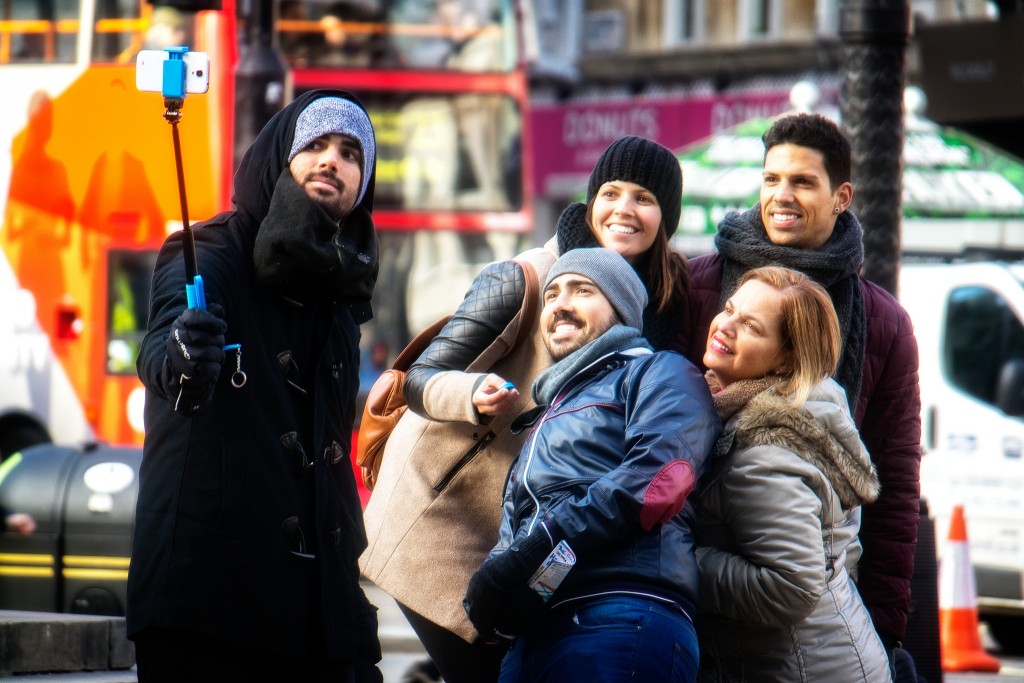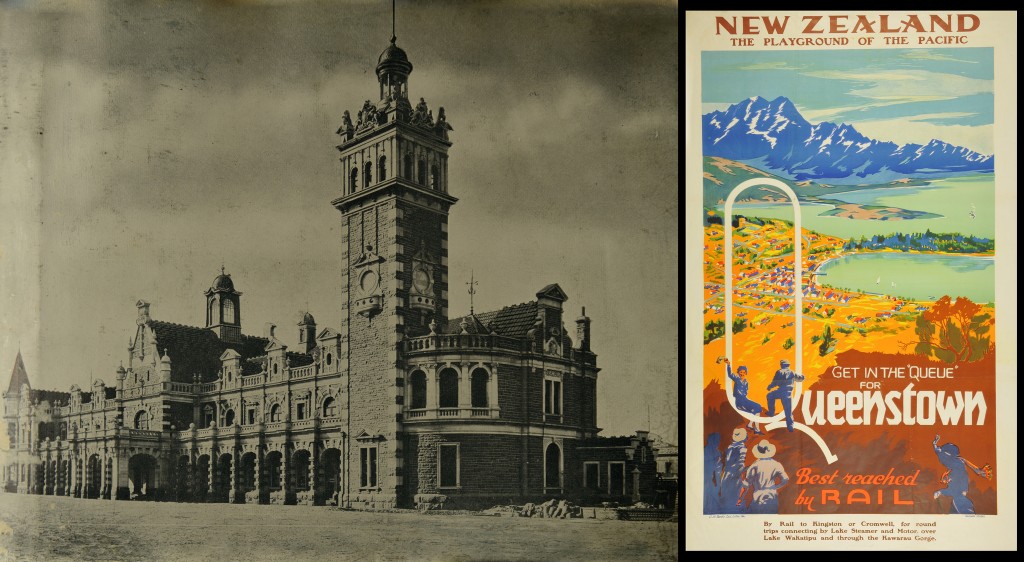What are some of the most important paradigm shifts for today’s destination marketing organizations (DMOs)? Decision-makers need to consider these four critical changes that will impact the way they lead their destination to greater success, given the new opportunities presented by evolving visitor behaviour.
First, let’s consider where we’ve been. Once upon a time, in a destination not so far away, marketers would broadcast beautiful, glossy stories to the world via mass media in the hope of reaching potential visitors. After hearing the stories, travellers would dream of visiting the destination, save their pennies and then enjoy a wonderful holiday. Eventually, the destination would see an increase in guests and revenue, making local stakeholders happy. Today, this model of promotion is turning inside out as technology ushers us into a new frontier.
A change in storytelling: It’s now lateral and bottom-up
Today’s travellers are discovering their preferred destinations or experiences in the same way that they discover the best local ramen or lemon tart: through the photos their friends share on Instagram and elsewhere online. While word of mouth has always been a compelling and trusted marketing tactic, today’s consumers are able to reach exponentially larger audiences because of digital social networks. This societal shift has turned content consumers into content producers, which makes the individual the foundation of any destination marketing strategy.
Manufacturing stories for a mass audience (also known as traditional advertising) is no longer an effective use of a DMO’s resources. Instead, DMOs must harness the power of the stories that are generated from within their destination – those that resonate with their visitors’ personal passions. As the wine industry has taught us, genuine, personalized stories are the most compelling because they engage the emotions and help create a specific reason to visit a destination. Today, these engaging stories are most often created by consumers themselves.
A change for travellers: The desire and ability to share immediately
If you go on a trip, but it doesn’t appear on Instagram, did it really happen? For today’s visitors, documenting and sharing travel experience can as important as the experience itself. Even before the invention of the selfie stick, “bragging” has always been a major motivator for travel. According to recent secondary research that reviewed studies on traveller motivation, seven out of eight studies pointed to prestige, travel bragging, or looking good as one of the top two factors that cause people to travel. (See Gamification in Tourism by Paul Bulencae and Roman Egger)
In other words, showing your friends online that you held a koala at a zoo (better yet, at a progressive, sustainable zoo) may be as or more important than actually holding the koala.
Travellers are intrinsically motivated to document and promote their experiences and fortunately, they are better equipped than ever to share their stories.
| Sharing then | Sharing now |
| Limited peer connections | Large peer connections |
| Lag between event and sharing | Simultaneous experiencing and sharing |
| Poor-quality content (photos and video) | High-quality content |
| Limited and expensive production tools | Powerful and cheap production tools |
| Delayed reaction from peers | Instant reaction from peers |
In addition, many of the experiences shared online through photos or videos serve as word-of-mouth endorsements for the destination. Although travel review sites like TripAdvisor still affect traveller decisions, it’s important to remember that many travellers may not choose not to write a review, opting to instead create a Snapchat Story or Facebook photo album about the koala as their way of endorsing an experience.

Image Credit: Garry Knight, Flickr
A change for operators: Stories will spread through remarkable experiences
Historically, smaller tourism operators have limited themselves in the degree to which they design the visitor experience. Beyond the core guest experience – a whale watching company will bring people to see the whales, for example – important touch points along the visitor journey have primarily been an afterthought. They tend not to ask questions about smaller details like, “What do the life jackets look like?” Many operators need to seize more opportunities to delight visitors.
Modern tourism operators need to be accomplished experience designers. They need to craft their product to make their guests the stars and their staff the supporting cast while triggering guests to share the amazing experiences with their peers. Industry-leading operators have been doing this for decades. According to the book Be Our Guest, Disney’s devotion to delighting guests has earned them a 70% visitor return rate, for example.
Operators benefit further from improving the experiences when they are able to prompt social sharing and user-generated promotion. This way, they can help their guests become their best marketers. However, many operators neglect to support and amplify the stories their guests are telling, treating social media as simply an affordable opportunity for them to promote their own messages.
When guests start to share, operators have another role to play, flagging remarkable stories and images for their destination marketing organization (DMO) who can bring them to a larger audience and has a need for authentic stories.
Given these changes, operators need to recognize that:
• Almost all of their guests are now newscasters and camera crews.
• They are in the best position to trigger and promote sharing from guests.
• They can’t rely on a DMO’s mass media campaign to bring in guests.
• That they can significantly improve the design of their visitor experiences.
• They must help their destination by curating exceptional visitor content for DMOs to share.
Related reading: Why destination marketing organizations need to become experts at consumer engagement
A change for destination marketing organizations: Leading through collaboration
More than ever before, DMOs must help their operators turn their guests into the destination’s best marketers. Since the most compelling stories and content now come from the “bottom up,” destination marketing is now a distributed effort, and this represents a massive shift. DMOs must now lead and coordinate with their local tourism businesses to prompt, capture and amplify visitor endorsements.
One way a DMO can lead is by making the necessary knowledge and technology available to operators. For example, progressive DMOs in British Columbia, Canada have coordinated cooperative licensing to give tourism operators access to key software like social media dashboards and social campaign software they otherwise could not afford. Kootenay Rockies Tourism (a region of British Columbia, Canada) is licensing and sharing the necessary software for Tourism Fernie (a local DMO) and Fernie businesses to nurture, curate and display a social experience around the hashtag #FernieStoke.
DMOs that best support their operators with leadership and investments like these will be in the best position to help their visitors do the best marketing for them. Using targeted social media advertising is another essential tactic for the modern DMO. Destinations can use research-based data to distribute visitor- and operator- generated stories to the audiences that are the most likely to respond. Customer relationship management (CRM) tools with a social layer, such as Tradable Bits or Zoho CRM, can greatly streamline this process.
DMOs can lead their destinations by example
Since visitors are now clearly the lead storytellers for modern travel experiences, how can operators encourage visitors to share the stories of the destination? By crafting remarkable triggers or experiences and supplying the infrastructure and visible mementos to support social sharing. The best experiences inspire, support and reward visitor storytelling and endorsement. Future articles will explore some specific ways to do this.
Meanwhile, your DMO has an important leadership role to play by helping its operators embrace this tactic. The destination can then amplify the resulting content and distribute it to a targeted audience.
Related reading: How destinations use data to better collaborate with industry and reach consumers
Destination Think helps destination marketers adapt to change by developing and implementing strategic plans and by providing marketing services. Stay relevant; contact us to find out how we can help.
Featured image Credit: Archives New Zealand, Flickr










0 Comments